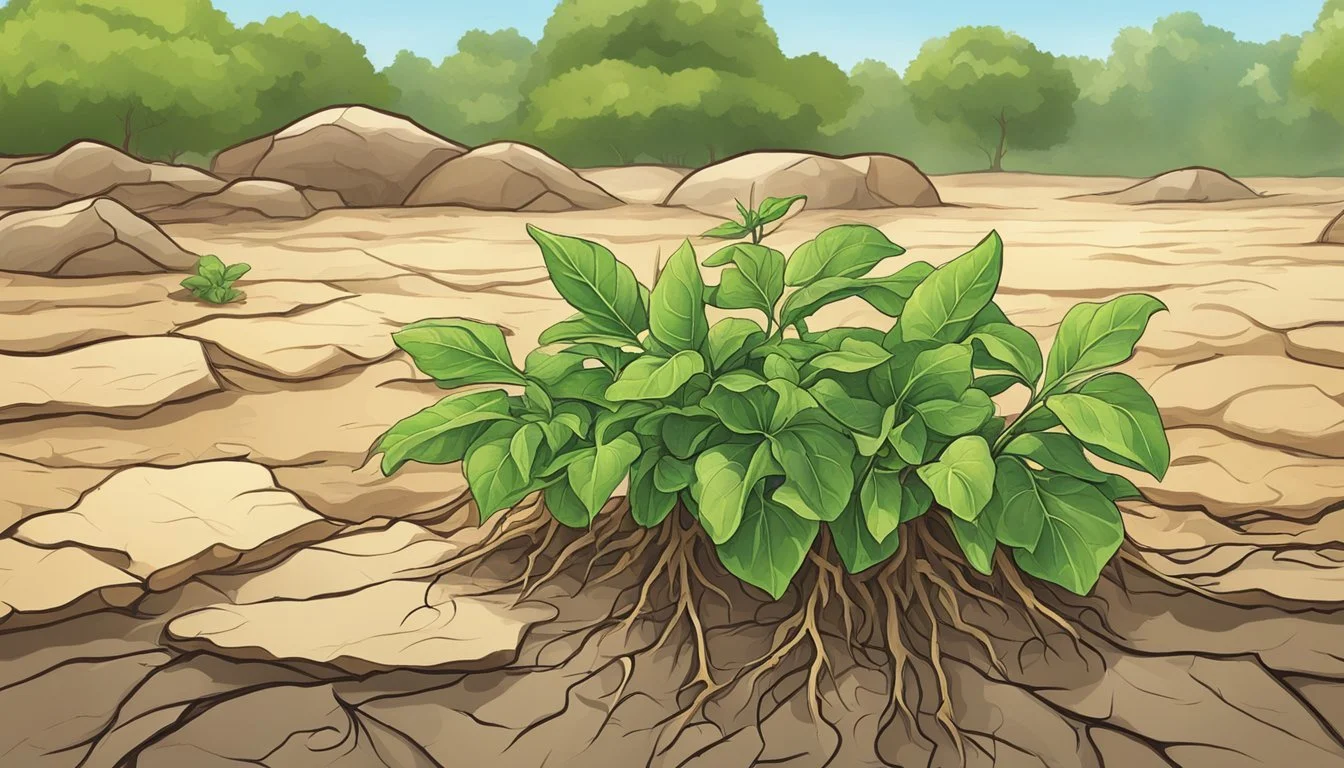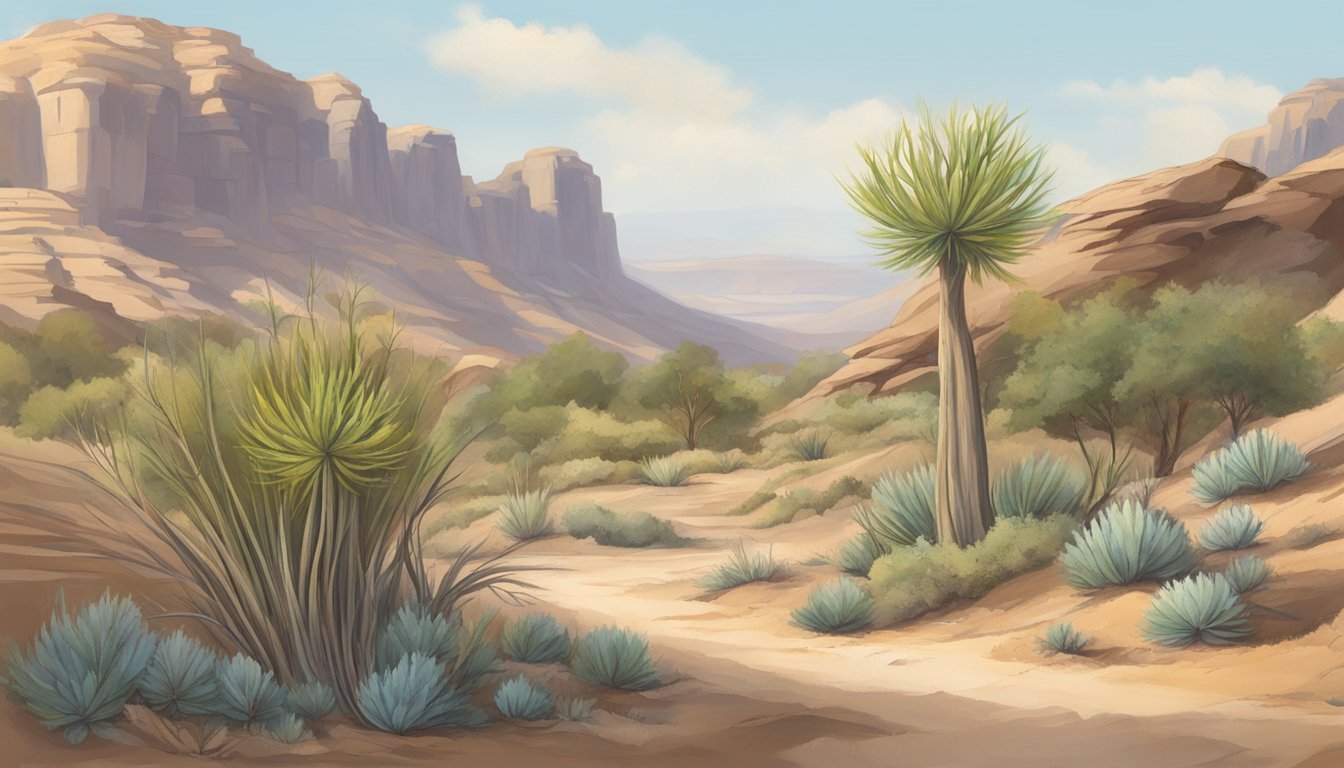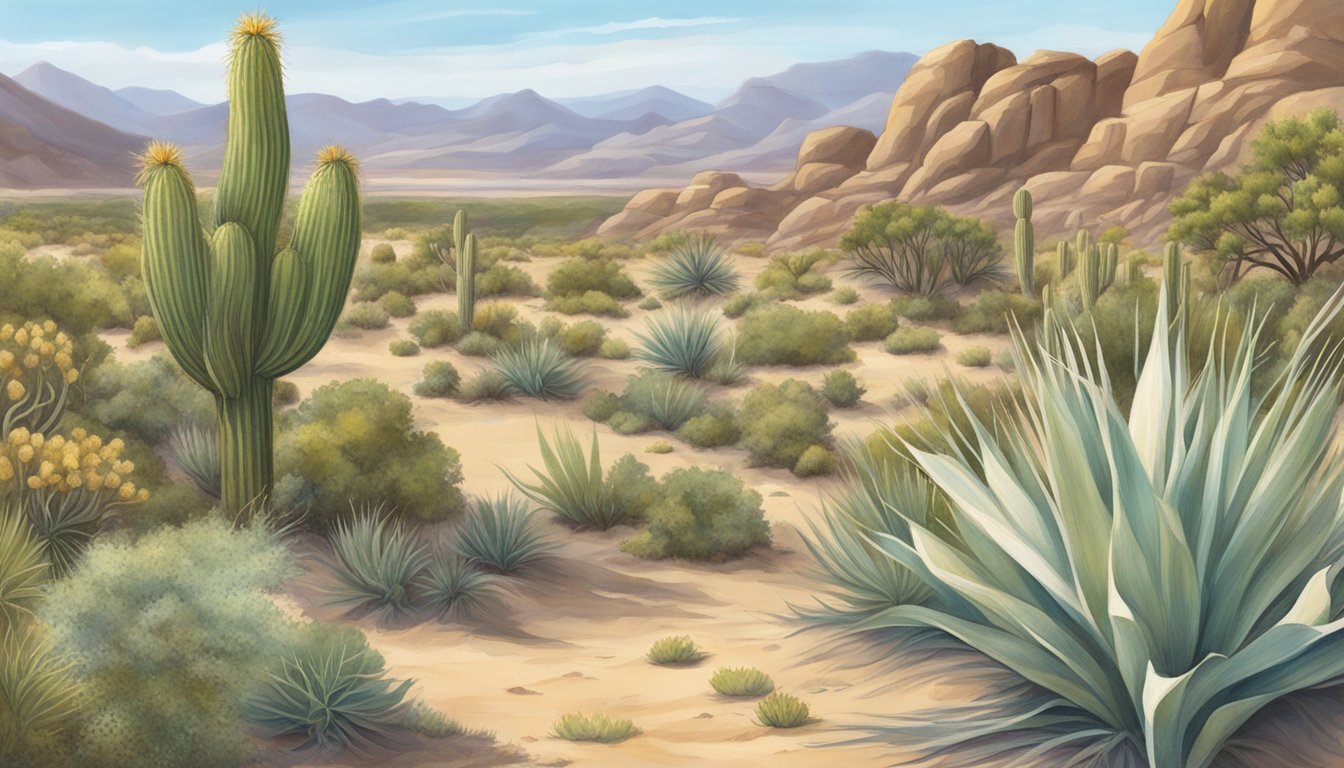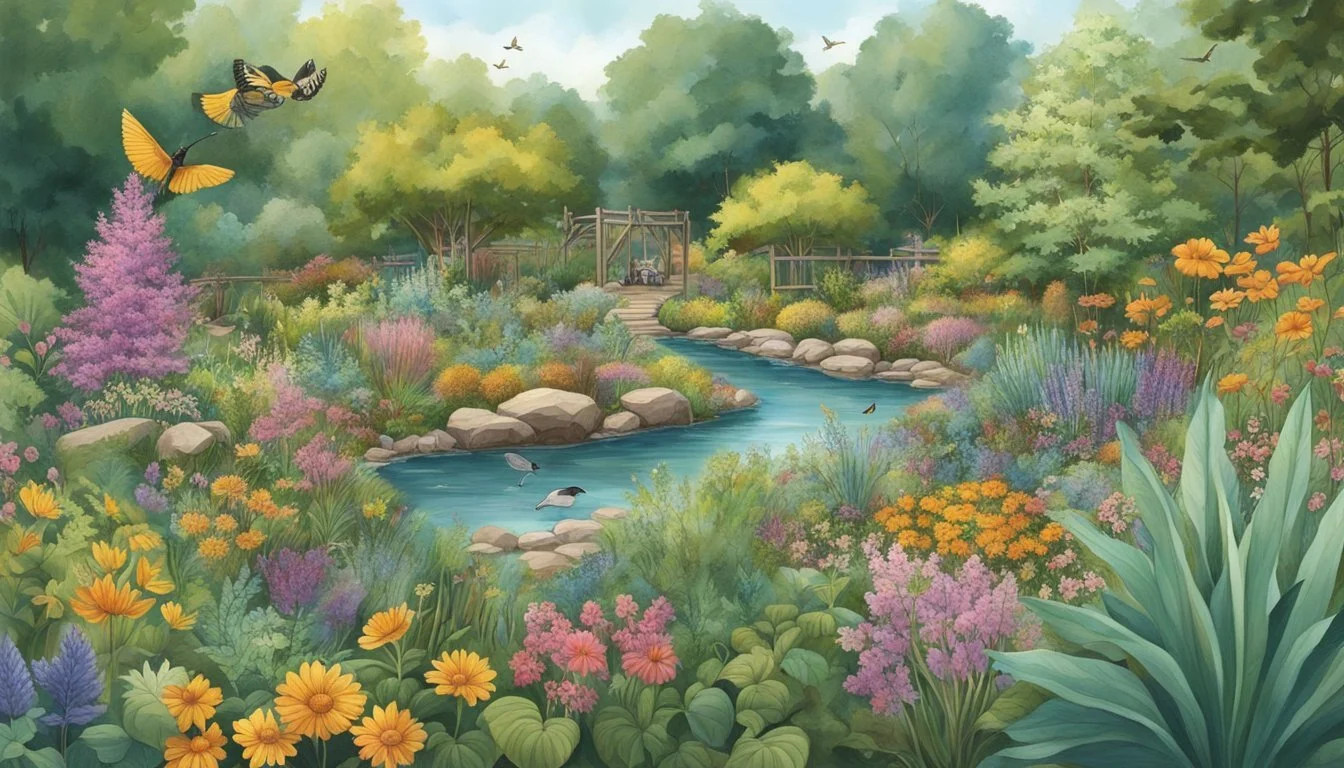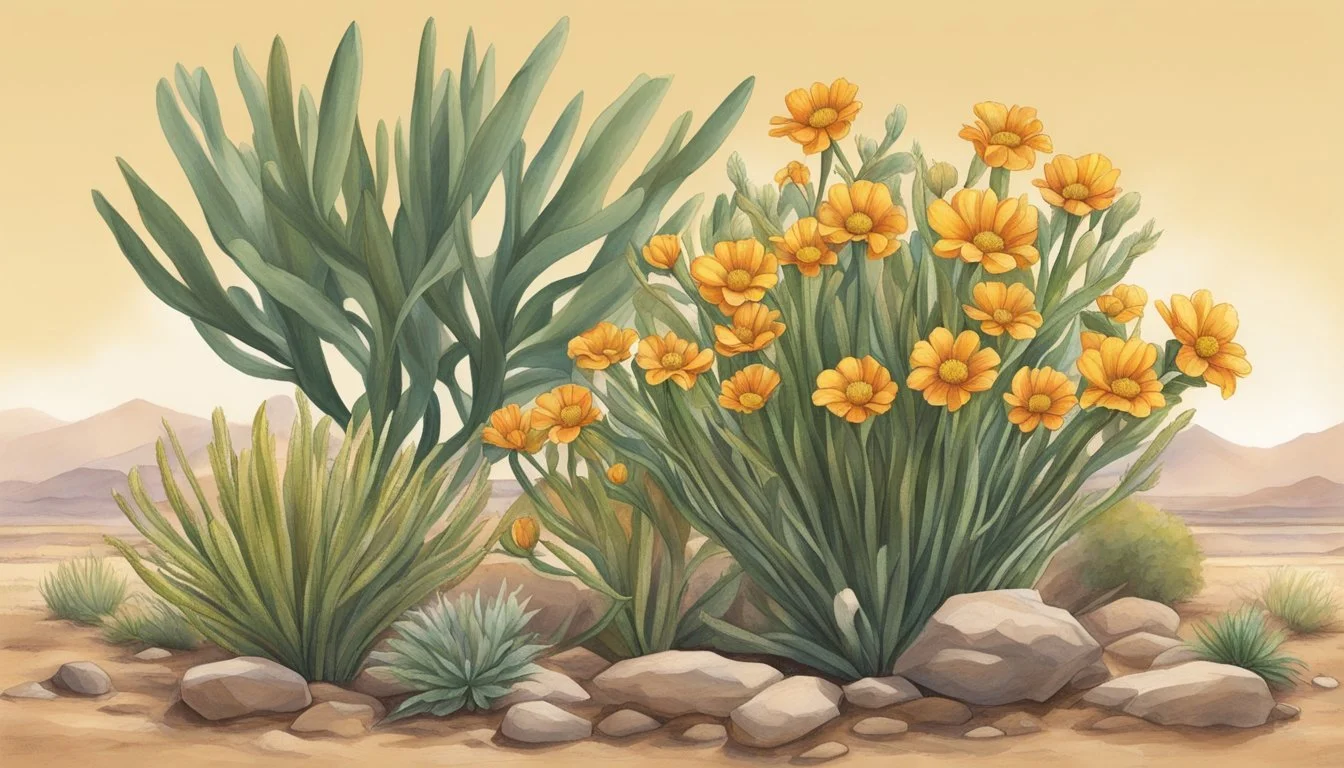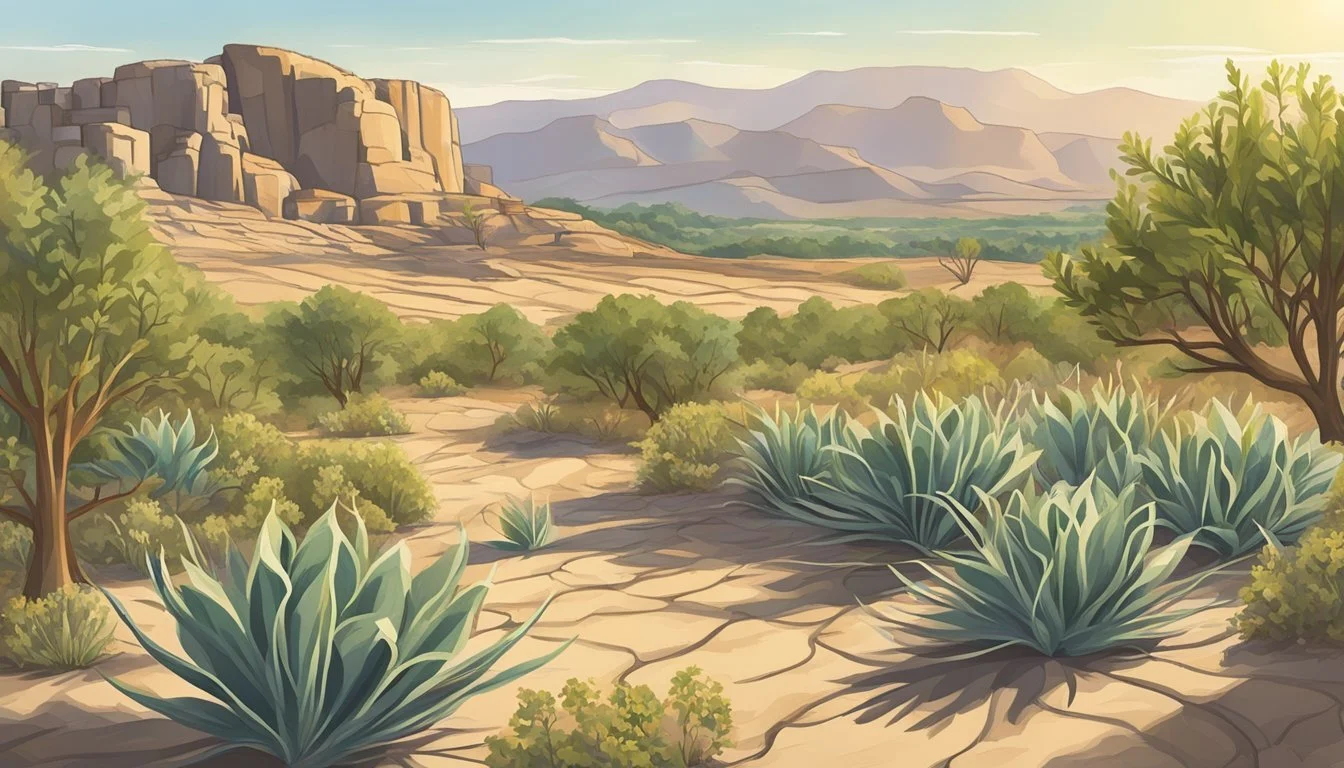Drought-Tolerant Plants in Missouri
Top Varieties for Resilient Gardens
In the face of fluctuating weather patterns, particularly the prolonged periods of dryness, gardeners and landscapers across Missouri are turning their attention to drought-tolerant plants. These resilient species are prized for their ability to withstand scarce water conditions while maintaining the health and vibrancy of the state's natural landscapes. From prairie meadows to suburban gardens, a diverse array of native flora thrives, providing ecological benefits alongside aesthetically pleasing greenery.
The selection of drought-resistant plants available for cultivation in Missouri includes a rich variety of both native and adapted species that can flourish even in challenging environments. Plants like black-eyed Susans, yellow coneflowers, and butterfly weed not only add color and texture to gardens but also play a crucial role in supporting local wildlife. By incorporating these low-maintenance plants into their landscape designs, Missouri residents can create sustainable outdoor spaces that require minimal supplemental watering.
With a thoughtful approach to planting, it's possible to engineer a garden that conserves water and endures during drought periods. Education on the characteristics and care of drought-tolerant plants is paramount for success. Through the use of these hardy species, enthusiasts can enjoy a lush, green environment that aligns with conservation efforts and supports the regional ecosystem.
Understanding Drought and Its Impact on Flora
Drought imposes crucial limits on plant growth and survival, and its effect on the flora of Missouri is especially significant due to the state's varied climate and soil conditions.
Climate of Missouri and Water Availability
Missouri's climate presents a mix of Midwestern and Southern patterns, with hot summers and cold winters. Annual precipitation varies, but droughts can occur, particularly in the hotter months when plants require more water. During these periods, water availability for plants decreases, which can lead to challenges in both natural ecosystems and cultivated landscapes. The availability of water, or lack thereof, is a pivotal factor in determining the well-being of Missouri's flora, as it affects everything from seed germination to the overall health of fully grown plants.
Soil Characteristics and Their Role in Drought Resistance
The soil types in Missouri range from rich loams to clay and sandy soils. Soils with good levels of organic matter can retain moisture better and are more drought-resistant. However, sandy soils, which drain quickly, can exacerbate drought conditions and require more frequent watering or irrigation. Soil properties directly influence root development and water uptake, which are critical for plant survival in full sun exposure and during prolonged dry spells. The capacity of Missouri's soils to support plant life during dry periods is a key aspect of understanding drought impact as it directly influences plant growth and health.
Principles of Drought-Tolerant Landscaping
Drought-tolerant landscaping, often known as "xeriscaping," focuses on water conservation through creative landscaping. It incorporates practices that reduce the need for irrigation, relying instead on plants and landscaping techniques suited to the natural climate.
Creating a Water-Efficient Landscape
A water-efficient landscape begins with a thorough planning process that evaluates the environment and selects appropriate plants and designs. Zoning is integral; dividing the landscape into hydrozones based on water needs allows for targeted irrigation and minimizes waste. As the University of Missouri Extension suggests, on larger sites, integrating water-efficient practices into new and existing landscaping sections maximizes efficiency.
Selection and Placement of Plants for Maximum Efficiency
Choosing plants is a strategic step in water-efficient landscaping. Native plants, which are naturally adapted to Missouri's climate, often require less water and care than non-natives. Arranging plants in groups based on their water requirements maximizes efficiency and reduces overall water usage. As noted by the Missouri Botanical Garden, plants such as Rose verbena are drought-tolerant and suitable for the regional climate.
Soil Amendments and Mulching Techniques
Improving soil quality can significantly enhance water retention and reduce the need for supplemental watering. Adding organic material, such as compost, helps soil retain moisture and makes nutrients more accessible to plants. Mulching is a critical technique for maintaining soil moisture and temperature, as well as reducing weed growth. Utilizing organic mulches, including bark or straw, provides the added benefit of enriching the soil as they decompose.
Native and Drought-Tolerant Plant Species
Missouri's diverse climate and ecosystems support a variety of native and drought-tolerant plant species suited for landscaping that conserves water and withstands local conditions.
Trees and Shrubs Suited for Missouri's Climate
Missouri's climate supports various drought-resistant trees and shrubs. These species have adapted to survive the hot summers and occasional dry spells characteristic of the region. The Eastern Redbud is a Missouri native tree that thrives in well-drained soils and full sun to partial shade. Shrubs like the Fragrant Sumac are not only drought-tolerant but also provide rich autumn colors for landscaping.
Recommended Trees:
Eastern Redbud (Cercis canadensis)
Flowering Dogwood (Cornus florida)
Recommended Shrubs:
Fragrant Sumac (Rhus aromatica)
Wild Hydrangea (Hydrangea arborescens)
Herbaceous Plants and Ornamental Grasses
Herbaceous perennials and ornamental grasses offer low-maintenance and drought-tolerant solutions for homeowners. The coneflower and black-eyed Susan are notable wildflowers that not only withstand drought but also attract pollinators to the garden. For example, Prairie Dropseed and Little Bluestem are ornamental grasses that are native to Missouri and require minimal water once established.
Herbaceous Plants:
Purple Coneflower (Echinacea purpurea)
Black-eyed Susan (Rudbeckia hirta)
Ornamental Grasses:
Prairie Dropseed (Sporobolus heterolepis)
Little Bluestem (Schizachyrium scoparium)
Groundcovers and Low-growing Options
For areas requiring groundcover, Missouri boasts several species that cover the soil while minimizing water use. The Rose Verbena is a hardy option that can handle poor soil conditions and spreads easily across rocky or prairie landscapes. Another excellent choice is the Missouri Primrose, which blooms with vibrant yellow flowers and can endure hot and dry environments.
Groundcovers:
Rose Verbena (Glandularia canadensis)
Missouri Primrose (Oenothera macrocarpa)
By choosing the right mix of native plants, trees, shrubs, and ornamental grasses that align with Missouri's typical soil and climate conditions, gardeners can create beautiful, sustainable landscapes that require less water and maintenance.
Cultivation and Care for Drought-Resistant Plants
Successful cultivation of drought-resistant plants in Missouri involves strategic watering techniques, proper fertilization, and diligent pruning to ensure the plants remain healthy and resilient to dry conditions.
Watering Techniques for Conservation
For drought-resistant plants, watering efficiency is paramount. Drip irrigation systems target the root zone directly, reducing water loss through evaporation. When setting up irrigation, it's crucial to adjust the irrigation schedule according to seasonal rainfall patterns, ensuring plants receive water only when necessary. During the establishment phase, deep watering encourages deeper root growth, which in turn enhances drought tolerance.
Fertilization and Nutrient Management
Drought-resistant plants often need less fertilizer than other plants. Applying slow-release fertilizers can provide a steady supply of nutrients without the risk of over-fertilization, which can lead to root damage. An annual soil test can help determine nutrient needs. It is essential not to fertilize during drought stress unless necessary, as this can strain plant resources.
Pruning and Maintenance to Enhance Drought Tolerance
Regular pruning helps maintain the plant's structure and vitality. Pruning during the dormant season can stimulate new growth that is more drought-tolerant. Removing dead or diseased wood can also prevent the spread of disease. Proper mowing height is also crucial for grasses; taller grass can shade soil and reduce water evaporation, while promoting deeper roots.
Landscaping for Wildlife and Ecosystem Support
Landscaping in Missouri has the power to create vital habitats for local fauna and support an array of pollinators, fostering a thriving ecosystem. By selecting the right plants and maintaining natural landscapes, gardeners can provide critical resources for wildlife.
Creating Habitats for Native Fauna
Missouri's native fauna, including a variety of songbirds, relies on well-planned gardens to thrive. Wildlife habitat can be optimized by incorporating native grasses and plants that are tailored to Missouri's climate and soil conditions. These plantings should offer food sources, nesting materials, and shelter. For instance, clumps of prairie dropseed or little bluestem grass not only enhance the visual appeal of a garden but are also pivotal in providing cover for ground-nesting birds and small mammals.
Shelter: Planting densely branched shrubs and evergreens to serve as secure hideouts.
Nesting Sites: Leaving some natural areas undisturbed for ground nesters, and installing nesting boxes for songbirds.
Food Sources: Integrating plant varieties like purple coneflower and black-eyed Susan, which produce seeds favored by many songbird species.
Supporting Pollinators with Appropriately Selected Plants
The pollinator population—including bees, butterflies, and hummingbirds—plays a crucial role in plant reproduction and the production of fruits and seeds. To attract and support these vital insects, one must include a variety of nectar and pollen-rich plants. Bee balm, with its vibrant red flowers, is a magnet for pollinators and is particularly suited to Missouri's climatic conditions. It serves as an essential resource during the blooming months.
Nectar Sources: Incorporating a succession of blooming plants like bee balm to provide nectar throughout the seasons.
Pollen Providers: Ensuring a variety of flowering plants are present to offer pollen for different types of pollinators.
Diversity: Planting a mix of flowers in varying colors, shapes, and blooming times to cater to a wide range of pollinator species.
Featured Drought-Tolerant Plants in Missouri
Missouri landscapes can thrive with an array of drought-tolerant plants that offer enduring beauty with minimal water requirements. This section showcases specific species that are well-suited to Missouri's variable climate.
Notable Native Flowers: Echinacea and Rudbeckia
Echinacea, commonly known as purple coneflower, is a Missouri native that showcases pink to purple blossoms, robustly attracting pollinators. It's both a visual delight and a bastion of resilience against dry spells. Similarly, Rudbeckia, with its vibrant yellow petals surrounding a dark brown center, often referred to as black-eyed Susan, provides a pop of color while withstanding hot, arid conditions. Rose verbena and blue false indigo (Baptisia australis) are two other natives, offering a diverse palette of purples that also tolerate drought well.
Echinacea: Pink to purple flowers, attracts pollinators
Rudbeckia fulgida: Vivid yellow petals, black center
Rose verbena: Purple blooms; adaptable to poor soil
Blue false indigo: Sturdy, blue to purple flowers
Grasses and Sedges: Practicality Meets Aesthetics
Grasses and sedges form the backbone of a drought-resistant garden. Prairie Blazing Star and Little Bluestem are grasses that not only resist dry conditions but also add texture and movement to the landscape. Monarda bradburiana, a perennial with distinct aromatic leaves and tubular flowers, is valued for its adaptability and attractiveness to wildlife.
Prairie Blazing Star: Tall spikes of purple flowers, grass-like foliage
Little Bluestem: Blue to green grass, red in fall
Monarda bradburiana: Aromatic leaves, pink to purple flowers
Shade Tolerant Varieties for Diverse Landscapes
Not all parts of the garden bask in full sun. For those shady corners, Pachysandra terminalis, also known as Japanese pachysandra, provides a lush, evergreen ground cover. Christmas fern, a native Missouri fern, complements shade gardens with its year-round green fronds. These plants pair well with Phlox, which offers a variety of colors, and Lavender, known for both its fragrance and its ability to withstand drought when planted in a well-draining, sunny spot.
Pachysandra terminalis: Evergreen ground cover, suited for shade
Christmas fern: Dark green fronds, year-round interest
Phlox: Diverse colors, for partial shade to full sun
Lavender: Fragrant, drought-resistant, requires well-draining soil
Implementation and Management
To cultivate drought-tolerant plants successfully in Missouri's variable climate, careful planning and the adoption of effective water conservation strategies are essential. These practices ensure the long-term sustainability and health of your garden.
Planning for Seasonal Changes and Long-term Growth
Implementing an effective garden layout begins by understanding the local weather patterns and planning for the phases of drought. Gardeners should select plants that are suited to Missouri's climate, and cogitate how the seasonal changes will impact their growth. It is critical to consider the full growth potential of plants to prevent overcrowding, which can lead to compacted soils and reduced air circulation. Early morning is the optimal time for watering, as it minimizes evaporation and prepares plants for the day's heat.
Strategies like pruning during the dormant season help to stimulate new growth and maintain the plant's structure. Mulching plays a dual role in insulating the soil against extreme temperatures and in conserving moisture. The right mulch can greatly reduce water use and help manage soil evaporation.
Water Conservation Strategies in Practice
Missouri gardens benefit greatly from drip irrigation systems, which deliver water directly to the plant's roots, drastically reducing wastage through evaporation and runoff. Configuring a drip system to operate during the early morning can significantly enhance its efficiency.
Soil management is also a key component. Adding organic material can improve soil structure, helping it retain moisture and resist compacted conditions. Regular checks on moisture levels guide gardeners on when and how much to water, protecting plants from stress during critical growth phases and unpredictable weather patterns. By closely monitoring watering needs and employing conservation techniques, Missourians can create resilient landscapes capable of withstanding climate challenges.
Frequently Asked Questions
This section addresses common inquiries on selecting and caring for drought-tolerant plants that are well-suited to Missouri's varying climate and soil conditions.
What are the best drought-tolerant plants suitable for Missouri landscapes?
The best drought-tolerant plants for Missouri landscapes include species like the Glandularia canadensis (Rose verbena), which is native to the region and offers both hardiness and vibrant color.
Can you recommend drought-tolerant plants that thrive in Missouri's full sun conditions?
For full sun conditions in Missouri, a top recommendation is the perennial Missouri Primrose (Oenothera macrocarpa) which displays showy yellow blooms and is remarkably drought-tolerant while being able to manage poor soil.
Which Missouri native plants are ideal for erosion control and also drought-resistant?
Plants like the native Lanceleaf Coreopsis are ideal for erosion control in Missouri landscapes due to their durability and deep-root systems which help stabilize the soil while also being drought-resistant.
What are some low-maintenance, drought-tolerant perennial plants for Missouri gardens?
Low-maintenance, drought-tolerant perennials for Missouri gardens include the Rose verbena, which is praised for its long flowering season and its ability to flourish in challenging conditions.
Are there any evergreen plants that are drought-tolerant and suitable for Missouri's climate?
The Red cedar (Juniperus virginiana) is an evergreen plant well-known for its excellent drought tolerance and suitability to Missouri's climate, offering both aesthetic appeal and practical benefits.
Which trees native to Missouri are known for their exceptional drought resistance?
Native to Missouri, the Quaking Aspen (Populus tremuloides) is a drought-resistant tree that can reach up to 60 feet in height and is distinguished by its unique leaves that flutter in the wind.


